 W
WAftabeh is a pitcher made out of clay, copper, brass, or plastic which is used traditionally for purposes of hand washing, cleansing, and ablution. Its overall shape is similar to a ewer with an angled spout protruding from its side, from where water is poured. It shares resemblance with lota and kindi in Indian culture.
 W
WA barrel or cask is a hollow cylindrical container with a bulging center, longer than it is wide. They are traditionally made of wooden staves and bound by wood or metal hoops. The word vat is often used for large containers for liquids, usually alcoholic beverages; a small barrel or cask, typically with capacity of not more than ten gallons, is known as a keg.
 W
WA beak-spouted ewer is a ewer, jug, pitcher or flagon with a spout formed in the shape of a beak.
 W
WA bottle is a narrow-necked container made of an impermeable material in various shapes and sizes to store and transport liquids and whose mouth at the bottling line can be sealed with an internal stopper, an external bottle cap, a closure, or a conductive "inner seal" using induction sealing. Some of the earliest bottles appeared in China, Phoenicia, Crete, and Rome.
 W
WA bowser is a tanker of various kinds, named for Sylvanus Bowser.
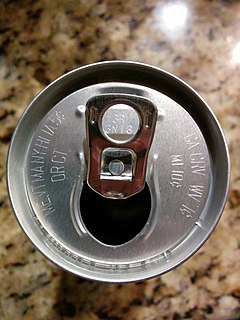 W
WCanned water is drinking water, including spring water, artesian spring water, purified water, carbonated water and mineral water, packaged in beverage cans made of aluminium or tin-plated steel.
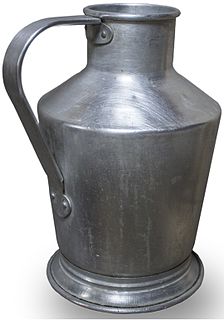 W
WThe Cegléd water jug is a container for water named after the city of Cegléd, Hungary. It is also used as a musical instrument in folk music, in particular, in Romani music of Hungary.
 W
WA decanter is a vessel that is used to hold the decantation of a liquid which may contain sediment. Decanters, which have a varied shape and design, have been traditionally made from glass or crystal. Their volume is usually equivalent to one standard bottle of wine.
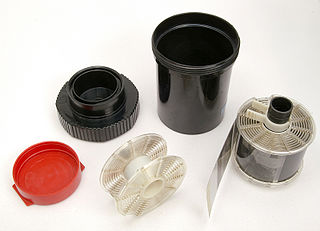 W
WA developing tank is a light-tight container used for developing film. A developing tank allows photographic film to be developed in a daylight environment. This is necessary because most film is panchromatic and therefore can not be exposed to any light during processing. Depending upon the size and type, a developing tank can hold one to many roll or sheet films. Famous brands include Paterson, Yankee, Jobo and Nikor.
 W
WA disposable cup is a type of tableware and disposable food packaging. Disposable cup types include paper cups, plastic cups and foam cups. Expanded polystyrene is used to manufacture foam cups, and polypropylene is used to manufacture plastic cups.
 W
WA drink can is a metal container designed to hold a fixed portion of liquid such as carbonated soft drinks, alcoholic drinks, fruit juices, teas, herbal teas, energy drinks, etc. Drink cans are made of aluminum or tin-plated steel. Worldwide production for all drink cans is approximately 370 billion cans per year.
 W
WA flagon is a large leather, metal, glass, plastic or ceramic vessel, used for drink, whether this be water, ale, or another liquid. A flagon is typically of about 2 imperial pints (1.1 l) in volume, and it has either a handle, or one or two rings at the neck. Sometimes the neck has a large flange at the top rather than rings. The neck itself may or may not be formed into one, two or three spouts. The name comes from the same origin as the word "flask".
 W
WThe flimsy, officially known as the Petrol, Oil and Water can, was a World War II fuel container used by the British Army. They held 4 imperial gallons of fuel, which allowed them to be moved by a single person.
 W
WA fuel container is a container such as a steel can, bottle, drum, etc. for transporting, storing, and dispensing various fuels.
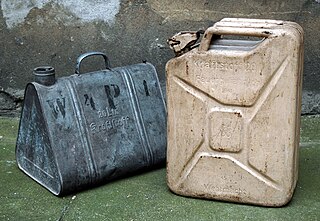 W
WA jerrycan is a robust liquid container made from pressed steel. It was designed in Germany in the 1930s for military use to hold 20 litres of fuel. The development of the jerrycan was a significant improvement on earlier designs, which required tools and funnels to use, and it contained many innovative features for convenience of use and robustness. After widespread use by both Germany and the Allies during the Second World War, today similar designs are used worldwide for fuel and water containers, some of which are also produced in plastic. The designs usually emulate the original steel design and are still known as jerrycans. The original design of jerrycan and various derivatives remain in widespread military use.
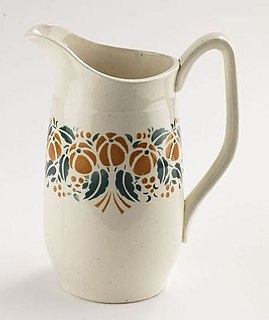 W
WA jug is a type of container commonly used to hold liquids. It has an opening, sometimes narrow, from which to pour or drink, and has a handle, and often a pouring lip. Jugs throughout history have been made of metal, and ceramic, or glass, and plastic is now common.
 W
WA juice box, also called a carton or 'popper', is a small container used to conveniently carry and consume drinks. They are frequently made of paperboard with an aluminum foil lining, but variations exist. Juice boxes are most popular with children, although other uses include emergency drinking water, milk and wine.
 W
WA keg is a small barrel.
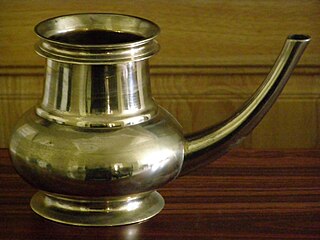 W
WA lota, a type of spouted vessel made of brass, copper or plastic used in Indian subcontinent, specially in the Indian-origin religions, since at least 2nd millennium BC. In the Indian-origin religions, the copper lota has sacred usage, such as in yagna ritual during puja prayers, weddings and other sacred ceremonies. According to the ancient Indian/Hindu-origin traditional medicine system of ayurveda, drinking water stored in the copper lota has health and nutritional benefits.
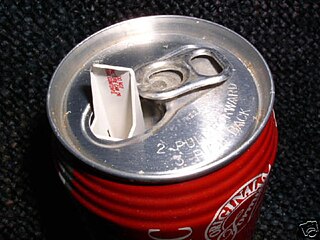 W
WMagiCans were special, mechanical cans used by The Coca-Cola Company in the United States of America as a part of their $100-million "Magic Summer '90" promotion. The MagiCan promotion began on May 7, 1990, and ended on May 31.
 W
WAn oil can is a can that holds oil for lubricating machines. An oil can can also be used to fill oil-based lanterns. An occupation, referred to as an oiler, can use an oil can to lubricate machinery.
 W
WA paper cup is a disposable cup made out of paper and often lined or coated with plastic or wax to prevent liquid from leaking out or soaking through the paper. It may be made of recycled paper and is widely used around the world.
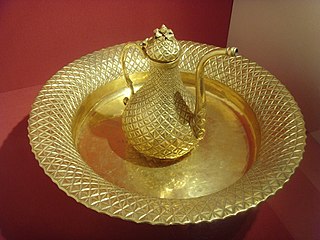 W
WAn ibrik is a container with a spout used for storing and pouring liquid contents. Although the Turkish word ibrik denotes simply a pitcher or ewer, the term is often used in English to mean a Turkish coffee pot, which is known in Turkish as a cezve.
 W
WIn American English, a pitcher is a container with a spout used for storing and pouring liquids. In English-speaking countries outside North America, a jug is any container with a handle and a mouth and spout for liquid — American "pitchers" will be called jugs elsewhere. Generally a pitcher also has a handle, which makes pouring easier. A ewer is an older word for pitchers or jugs of any type, though tending to be used for a vase-shaped pitcher, often decorated, with a base and a flaring spout. The word is now unusual in informal English describing ordinary domestic vessels. A notable ewer is the America's Cup, which is awarded to the winning team of the America's Cup sailing regatta match.
 W
WA plastic cup is a cup made out of plastic. It is most commonly used as a container to hold beverages. Some are reusable while others are intended for a single use followed by recycling or disposal. Some are see through, while others are not.
 W
WPlastic milk containers are plastic containers for storing, shipping and dispensing milk. Plastic bottles, sometimes called jugs, have largely replaced glass bottles for home consumption. Glass milk bottles have traditionally been reusable while light-weight plastic bottles are designed for single trips and plastic recycling.
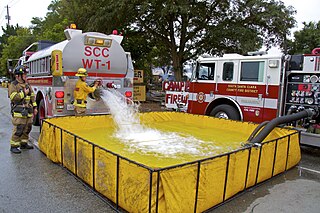 W
WA portable water tank is a temporary collapsible tank designed for the reserve storage of water in firefighting, emergency relief, and military applications. These tanks can be either supported or unsupported. The supported tanks have a steel or aluminum frame and range in size from 600 to 5000 US gallons or larger by custom design. Portable water tanks are also unsupported such as self-supporting tanks, blivets and pillow or bladder tanks and are available in sizes ranging from 100 US gallons (380 L) up to 80,000 US gallons (300,000 L).
 W
WA rainwater tank is a water tank used to collect and store rain water runoff, typically from rooftops via pipes. Rainwater tanks are devices for collecting and maintaining harvested rain. A rainwater catchment or collection system can yield 2,358 litres (623 US gal) of water from 2.54 cm (1.00 in) of rain on a 92.9 m2 (1,000 sq ft) roof.
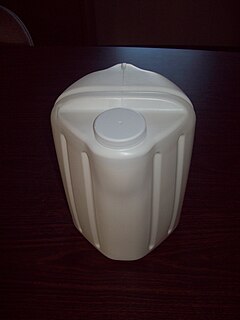 W
WThe square milk jug is a variant of the plastic gallon container of milk commonly sold in the United States. The design was introduced in the summer of 2008 and is marketed as environmentally friendly because of the shape's advantages for shipping and storage.
 W
WA teapot is a vessel used for steeping tea leaves or a herbal mix in boiling or near-boiling water, and for serving the resulting infusion which is called tea. Dry tea is available either in tea bags or as loose tea, in which case a tea infuser or tea strainer may be of some assistance, either to hold the leaves as they steep or to catch the leaves inside the teapot when the tea is poured. Teapots usually have an opening with a lid at their top, where the dry tea and hot water are added, a handle for holding by hand and a spout through which the tea is served. Some teapots have a strainer built-in on the inner edge of the spout. A small air hole in the lid is often created to stop the spout from dripping and splashing when tea is poured. In modern times, a thermally insulating cover called a tea cosy may be used to enhance the steeping process or to prevent the contents of the teapot from cooling too rapidly.
 W
WA Toby Jug, also sometimes known as a Fillpot, is a pottery jug in the form of a seated person, or the head of a recognizable person. Typically the seated figure is a heavy-set, jovial man holding a mug of beer in one hand and a pipe of tobacco in the other and wearing 18th-century attire: a long coat and a tricorn hat. The tricorn hat forms a pouring spout, often with a removable lid, and a handle is attached at the rear. Jugs depicting just the head and shoulders of a figure are also referred to as Toby jugs, although these should strictly be called "character jugs" or face jugs, the wider historical term.
 W
WA water bottle is a container that is used to hold water, liquids or other beverages for consumption. The use of a water bottle allows an individual to drink and transport a beverage from one place to another.
 W
WA watering can is a portable container, usually with a handle and a funnel, used to water plants by hand. It has been in use since at least 79 A.D. and has since seen many improvements in design. Apart from watering plants, it has varied uses, as it is a fairly versatile tool.